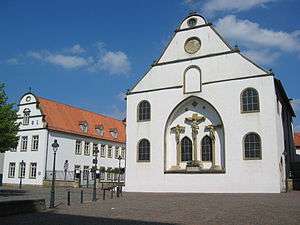804
Year 804 (DCCCIV) was a leap year starting on Monday (link will display the full calendar) of the Julian calendar.
| Millennium: | 1st millennium |
|---|---|
| Centuries: | |
| Decades: | |
| Years: |
|
| 804 by topic |
|---|
| Leaders |
| Categories |
|
| Gregorian calendar | 804 DCCCIV |
| Ab urbe condita | 1557 |
| Armenian calendar | 253 ԹՎ ՄԾԳ |
| Assyrian calendar | 5554 |
| Balinese saka calendar | 725–726 |
| Bengali calendar | 211 |
| Berber calendar | 1754 |
| Buddhist calendar | 1348 |
| Burmese calendar | 166 |
| Byzantine calendar | 6312–6313 |
| Chinese calendar | 癸未年 (Water Goat) 3500 or 3440 — to — 甲申年 (Wood Monkey) 3501 or 3441 |
| Coptic calendar | 520–521 |
| Discordian calendar | 1970 |
| Ethiopian calendar | 796–797 |
| Hebrew calendar | 4564–4565 |
| Hindu calendars | |
| - Vikram Samvat | 860–861 |
| - Shaka Samvat | 725–726 |
| - Kali Yuga | 3904–3905 |
| Holocene calendar | 10804 |
| Iranian calendar | 182–183 |
| Islamic calendar | 188–189 |
| Japanese calendar | Enryaku 23 (延暦23年) |
| Javanese calendar | 699–700 |
| Julian calendar | 804 DCCCIV |
| Korean calendar | 3137 |
| Minguo calendar | 1108 before ROC 民前1108年 |
| Nanakshahi calendar | −664 |
| Seleucid era | 1115/1116 AG |
| Thai solar calendar | 1346–1347 |
| Tibetan calendar | 阴水羊年 (female Water-Goat) 930 or 549 or −223 — to — 阳木猴年 (male Wood-Monkey) 931 or 550 or −222 |

The Gymnasium Carolinum in Osnabrück
Events
By place
Byzantine Empire
- Battle of Krasos: Emperor Nikephoros I refuses to pay the tribute imposed by Caliph Harun al-Rashid of the Abbasid Caliphate. A Muslim-Arab expeditionary force invades Asia Minor. During a surprise attack, Nikephoros suffers a major defeat against the Saracens at Krasos in Phrygia. According to Arabian sources, the Byzantines lose 40,700 men and 4,000 pack animals, while Nikephoros himself is almost killed, but saved by the bravery of his officers.[1][2]
Europe
- Summer – Emperor Charlemagne finishes the conquest of Saxony. The Carolingian administration in the north is restored and the diocese of Bremen is re-established.[3] Venice, torn by infighting, switches allegiance from Constantinople to King Pepin of Italy, son of Charlemagne.
- Obelerio degli Antenori becomes the ninth doge of Venice, after his predecessor Giovanni Galbaio flees to Mantua, where he is killed.
- The Gymnasium Carolinum in Osnabrück is founded by Charlemagne (the oldest school in Germany).[4]
Asia
- Kūkai, Japanese Buddhist monk, travels in a government-sponsored expedition to China, in order to learn more about the Mahavairocana Sutra. He brings back texts of Shingon (Esoteric Buddhism).
- Priest Saichō, patriarch of Tendai Buddhism, visits China and reportedly brings back tea seeds (or 805).
- The Inscription of Sukabumi from Eastern Java marks the beginning of the Javanese language.
By topic
Religion
- Ludger, Frisian missionary, becomes the first bishop of Münster, and builds a monastery there.
Births
- Bayazid Bastami, Persian Sufi (d. 874)
- Fujiwara no Yoshifusa, Japanese regent (d. 872)
Deaths
- May 19 – Alcuin, bishop and advisor to Charlemagne
- October 1 – Richbod, archbishop of Trier
- Saint Abundantia, Christian saint
- Giovanni Galbaio, doge of Venice (approximate date)
- Ibrahim al-Mawsili, musician and singer (b. 742)
- Lu Yu, Chinese author of The Classic of Tea (b. 733)
- Ragnar Lothbrok Legendary Norse Viking hero and Scandinavian King.
gollark: "You have something valuable. I must destroy it."
gollark: Naturally.
gollark: G
gollark: We should do that on NDs.
gollark: Perhaps if we do this to hatchlings we can reach never before seen view figures.
References
- Bosworth 1989, p. 248; Mango & Scott 1997, p. 660
- Treadgold 1988, p. 135
- Nicolle, David (2014). The Conquest of Saxony AD 782–785. p. 83. ISBN 978-1-78200-825-5.
- The building of the Gymnasium Carolinum, Osnabrück Archived May 19, 2006, at the Wayback Machine Accessed October 2008
Sources
- Bosworth, C.E., ed. (1989). The History of al-Ṭabarī, Volume XXX: The ʿAbbāsid Caliphate in Equilibrium: The Caliphates of Mūsā al-Hādī and Hārūn al-Rashīd, A.D. 785–809/A.H. 169–192. SUNY Series in Near Eastern Studies. Albany, New York: State University of New York Press. ISBN 978-0-88706-564-4.
- Mango, Cyril; Scott, Roger (1997). The Chronicle of Theophanes Confessor. Byzantine and Near Eastern History, AD 284–813. Oxford: Oxford University Press. ISBN 0-19-822568-7.
- Treadgold, Warren (1988). The Byzantine Revival, 780–842. Stanford, California: Stanford University Press. ISBN 978-0-8047-1462-4.
This article is issued from Wikipedia. The text is licensed under Creative Commons - Attribution - Sharealike. Additional terms may apply for the media files.